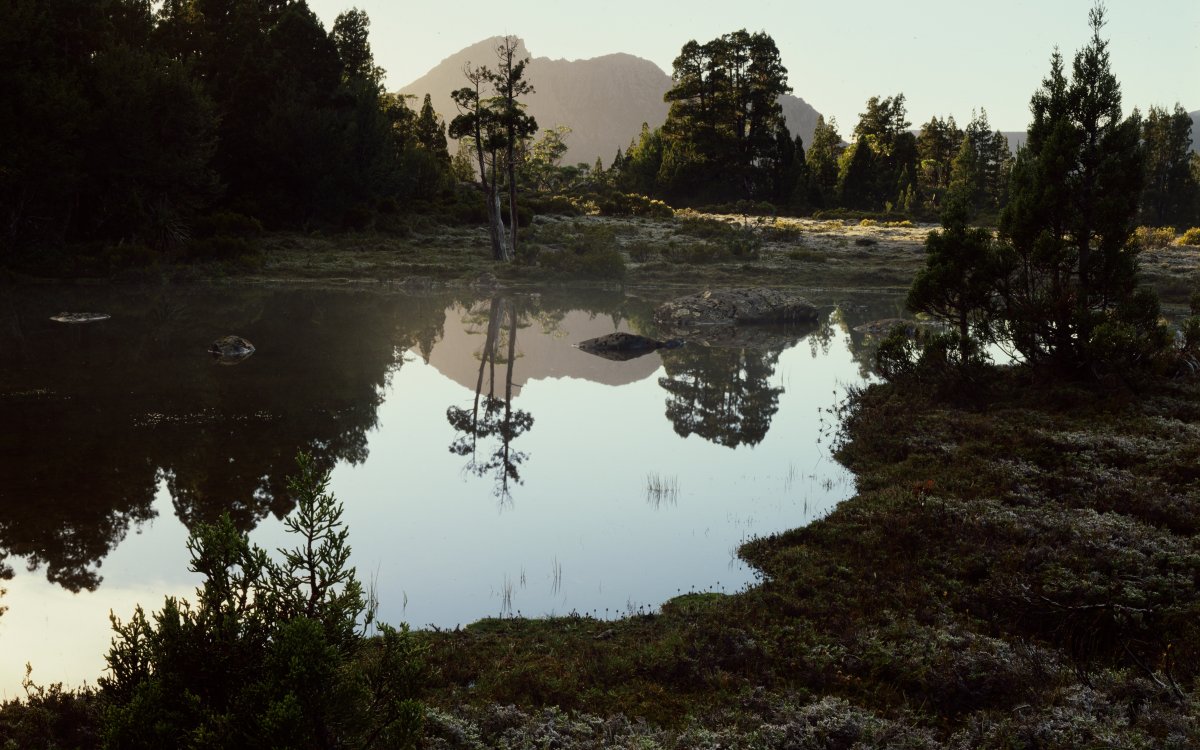
Dombrovskis, Peter, 1945-1996. (1979). Mount Hugel rises beyond a pine-rimmed lake, Cheyne Range, Tasmania, 1979 [transparency] / Peter Dombrovskis. https://nla.gov.au/nla.obj-148526393
- The world is divided into areas, known as biomes. A biome is made up of all the life, plant or animal, present within it. The continent of Australia has one of the most diverse ranges of biomes in the world.
- Have students research what biome their school sits in. What kind of plants, animals and weather can be expected in this type of biome?
- Have students research what biome their school sits in. What kind of plants, animals and weather can be expected in this type of biome?
- Similarly to biomes, the World is also divided into climate zones.
- Using the Australian Government’s Bureau of Meteorology Climate Classification of Australia map, have students find what climate zone the school sits in. Using the key on the right-hand side of the map, consider if the weather the students have experienced fits with this classification.
- Using the Australian Government’s Bureau of Meteorology Climate Classification of Australia map, have students find what climate zone the school sits in. Using the key on the right-hand side of the map, consider if the weather the students have experienced fits with this classification.
- With the above information. What types of natural events might be problem for the climate and biome in which the school sits? Are floods and cyclones a possibility? Is major drought? How prepared is the area to deal with a natural disaster now and in the future?
- Have students devise a travel brochure for a nature-focused holiday company. Research a biome anywhere in the world and use persuasive writing techniques to promote that destination as a holiday location. Some inspiration might include:
- What kinds of plants and animals can visitors see?
- What kind of weather events might they witness?
- How should they dress?
- How can they stay safe in the climate?
- Is the area in danger? How can they help preserve the biome during their visit?
- Are there any plants or animals found nowhere else they might see?
